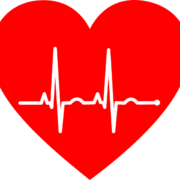Spring Clean Your Workplace
The start of a new season is a great time to audit your workplace and ensure it’s safe and clean. Here are some spring cleaning and safety tips to reduce clutter, disinfect, safety test, and review your emergency preparedness plans.
Reduce Clutter and Disinfect
After the busy holiday season and inevitable frantic first quarter of the year, your workspaces and storage areas have likely been neglected. As clutter collects dust, which causes allergies, and is mentally distracting for many, now is a great time to clean, organize, and prepare for spring and beyond.
Pay particular attention to storage areas, warehousing spaces, and common areas. Remove any trash, update signage, organize, and deep clean as you go. Also, encourage employees to clean their spaces by providing ample cleaning supplies, trash disposal areas, and organizational tools.
Restock Supplies
Check your workplace storage to ensure your supplies are fully stocked. Pay particular attention to your cleaning supplies, office supplies, and paper goods.
Focus on Clean Air
Allergens spike in the spring, causing more itchy eyes, runny noses, and sneezes. To help clean the air, replace your HVAC air filters and clean all vents. You may also reduce the allergens caused by dirt, pollen, and dander, by running air purifiers and vacuuming and dusting more regularly.
Tidy Common Areas
Common areas tend to accumulate a lot of waste and discarded items. Take time to clean and organize your break rooms, staging areas, entrances, and exits.
Test Safety Equipment
Test smoke, fire, and carbon monoxide alarms to ensure they work properly. Its also a good time to replace any batteries. Check any fire extinguishers to confirm they are easily accessible and in date.
Having a safety plan for a natural disaster, pandemic, or other emergency is both responsible and necessary. Make sure you have a solid plan for building escapes, ideally one that includes two different routes from all major work areas. Be sure to make alternative plans for anyone with a disability and establish a meeting point safe from your building. Once your plans are established, be sure to communicate them with your teams and confirm everyone understands what to do.
Make an Emergency Preparedness Kit
Though hopefully you will never need it, it’s prudent to maintain emergency preparedness kits. Ensure that both first aid kit contents and batteries, water, and blankets are included.
Have a happy, health, risk-free season!










